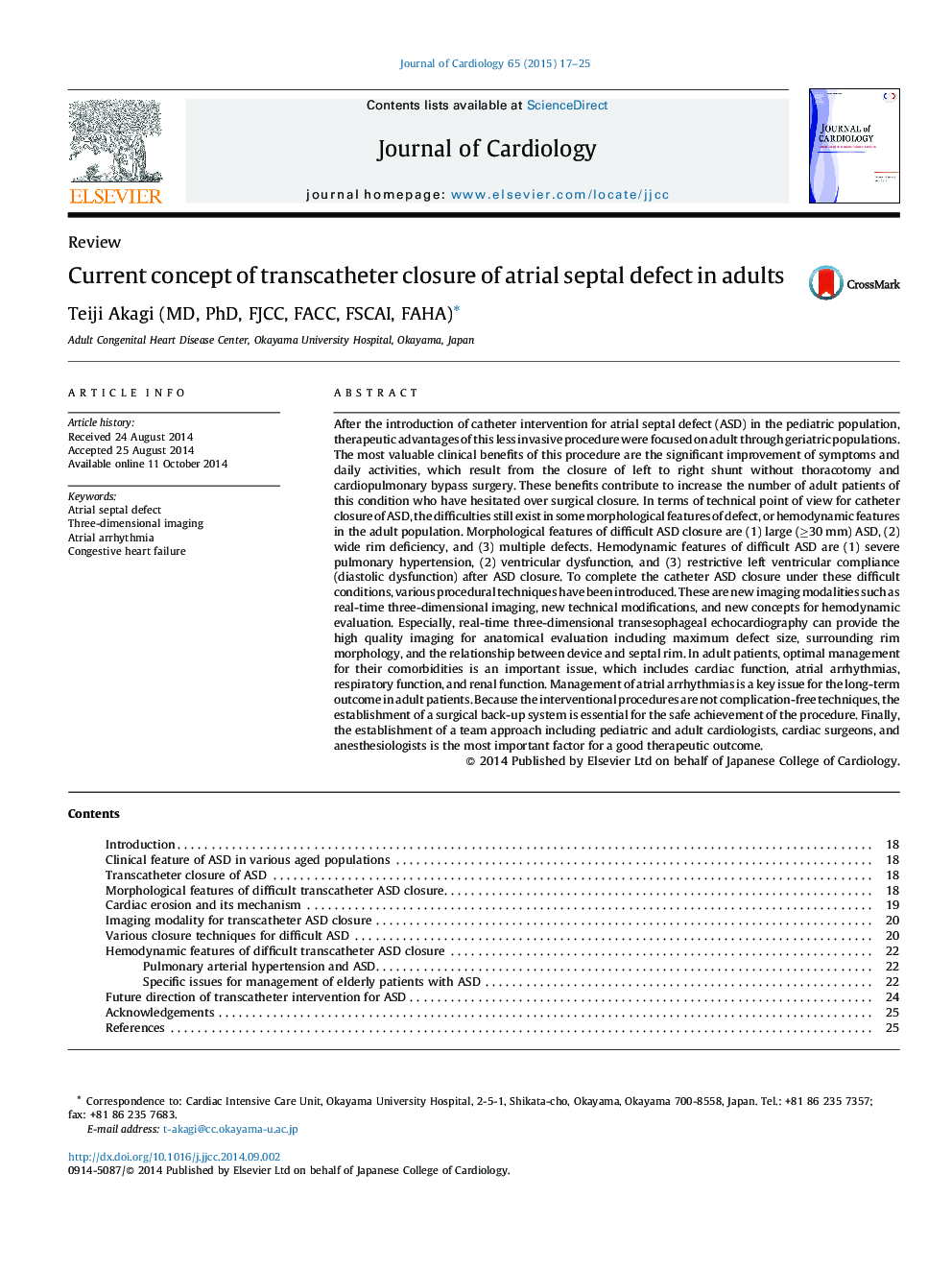| Article ID | Journal | Published Year | Pages | File Type |
|---|---|---|---|---|
| 5984001 | Journal of Cardiology | 2015 | 9 Pages |
After the introduction of catheter intervention for atrial septal defect (ASD) in the pediatric population, therapeutic advantages of this less invasive procedure were focused on adult through geriatric populations. The most valuable clinical benefits of this procedure are the significant improvement of symptoms and daily activities, which result from the closure of left to right shunt without thoracotomy and cardiopulmonary bypass surgery. These benefits contribute to increase the number of adult patients of this condition who have hesitated over surgical closure. In terms of technical point of view for catheter closure of ASD, the difficulties still exist in some morphological features of defect, or hemodynamic features in the adult population. Morphological features of difficult ASD closure are (1) large (â¥30 mm) ASD, (2) wide rim deficiency, and (3) multiple defects. Hemodynamic features of difficult ASD are (1) severe pulmonary hypertension, (2) ventricular dysfunction, and (3) restrictive left ventricular compliance (diastolic dysfunction) after ASD closure. To complete the catheter ASD closure under these difficult conditions, various procedural techniques have been introduced. These are new imaging modalities such as real-time three-dimensional imaging, new technical modifications, and new concepts for hemodynamic evaluation. Especially, real-time three-dimensional transesophageal echocardiography can provide the high quality imaging for anatomical evaluation including maximum defect size, surrounding rim morphology, and the relationship between device and septal rim. In adult patients, optimal management for their comorbidities is an important issue, which includes cardiac function, atrial arrhythmias, respiratory function, and renal function. Management of atrial arrhythmias is a key issue for the long-term outcome in adult patients. Because the interventional procedures are not complication-free techniques, the establishment of a surgical back-up system is essential for the safe achievement of the procedure. Finally, the establishment of a team approach including pediatric and adult cardiologists, cardiac surgeons, and anesthesiologists is the most important factor for a good therapeutic outcome.
